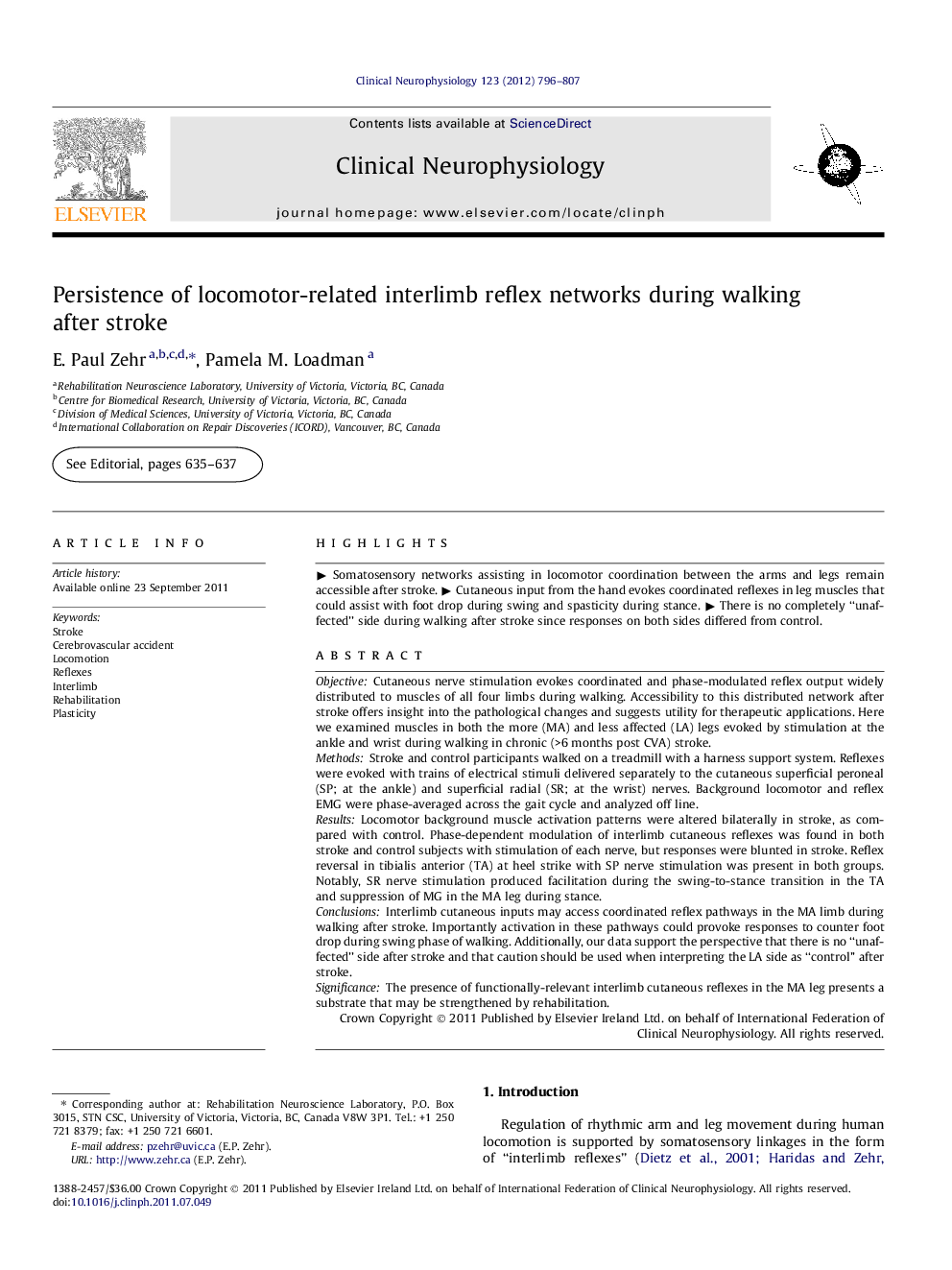| کد مقاله | کد نشریه | سال انتشار | مقاله انگلیسی | نسخه تمام متن |
|---|---|---|---|---|
| 3043611 | 1184981 | 2012 | 12 صفحه PDF | دانلود رایگان |

ObjectiveCutaneous nerve stimulation evokes coordinated and phase-modulated reflex output widely distributed to muscles of all four limbs during walking. Accessibility to this distributed network after stroke offers insight into the pathological changes and suggests utility for therapeutic applications. Here we examined muscles in both the more (MA) and less affected (LA) legs evoked by stimulation at the ankle and wrist during walking in chronic (>6 months post CVA) stroke.MethodsStroke and control participants walked on a treadmill with a harness support system. Reflexes were evoked with trains of electrical stimuli delivered separately to the cutaneous superficial peroneal (SP; at the ankle) and superficial radial (SR; at the wrist) nerves. Background locomotor and reflex EMG were phase-averaged across the gait cycle and analyzed off line.ResultsLocomotor background muscle activation patterns were altered bilaterally in stroke, as compared with control. Phase-dependent modulation of interlimb cutaneous reflexes was found in both stroke and control subjects with stimulation of each nerve, but responses were blunted in stroke. Reflex reversal in tibialis anterior (TA) at heel strike with SP nerve stimulation was present in both groups. Notably, SR nerve stimulation produced facilitation during the swing-to-stance transition in the TA and suppression of MG in the MA leg during stance.ConclusionsInterlimb cutaneous inputs may access coordinated reflex pathways in the MA limb during walking after stroke. Importantly activation in these pathways could provoke responses to counter foot drop during swing phase of walking. Additionally, our data support the perspective that there is no “unaffected” side after stroke and that caution should be used when interpreting the LA side as “control” after stroke.SignificanceThe presence of functionally-relevant interlimb cutaneous reflexes in the MA leg presents a substrate that may be strengthened by rehabilitation.
► Somatosensory networks assisting in locomotor coordination between the arms and legs remain accessible after stroke.
► Cutaneous input from the hand evokes coordinated reflexes in leg muscles that could assist with foot drop during swing and spasticity during stance.
► There is no completely “unaffected” side during walking after stroke since responses on both sides differed from control.
Journal: Clinical Neurophysiology - Volume 123, Issue 4, April 2012, Pages 796–807